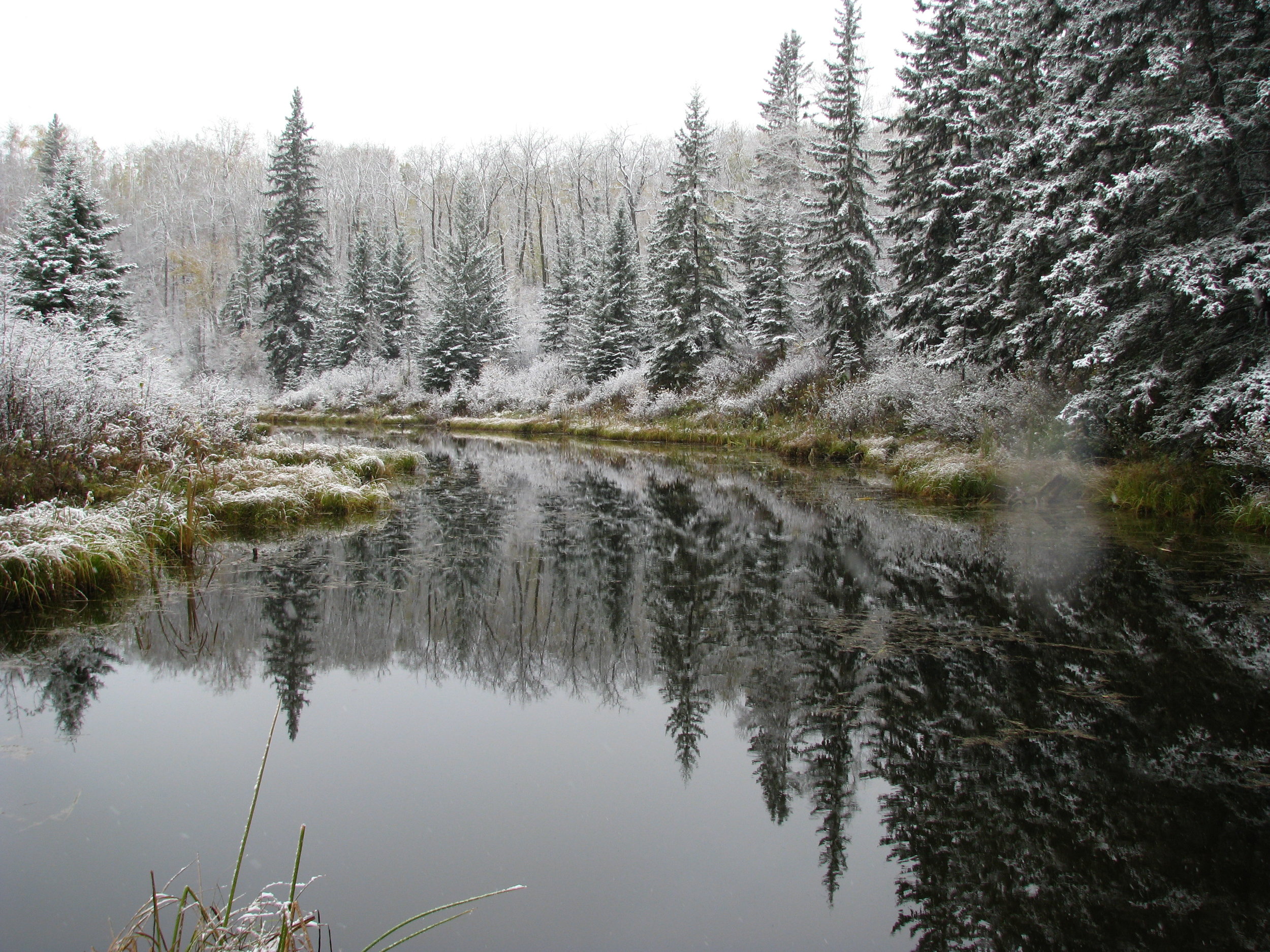The Oxbow
As river loops get bigger and more and more sediment deposits, water finds an easier course to follow. Over time, new channels form and bypass the old loop. The old, isolated loop is often referred to as an oxbow.
Whitemud Creek possesses numerous oxbows. The one in Larch Sanctuary is bound by an old beaver dam at the north end and a wall of accreted sediments on the south end. Groundwater and seepage from the west side of the ravine feeds the oxbow, as does spring and surface runoff. Notice when you visit how the level of the water varies with the seasons.
Waterfowl, grebes, and other water birds use the oxbow as feeding, breeding and brood-rearing habitat. You might see spotted and solitary sandpipers along the edges. Song birds that feed mainly on flying insects, such as swallows, flycatchers and waxwings, also frequent the oxbow area. Bats commonly forage over the water as the surrounding forest provides daytime roosting sites.
The Sanctuary’s Riparian Zone
The riparian zone that borders Whitemud Creek and the oxbow is essential to the Sanctuary’s ecology. The riparian area includes the floodplain, streamside vegetation, and lower slopes of the forest influenced by moisture from the wet areas.
The stream side vegetation is indigenous: native plants with complex root systems. These root systems stabilize the banks, prevent soil erosion and help improve water quality.
Riparian vegetation in general provides habitat for many species. In Alberta, approximately 80% of all wildlife use a riparian area at some point in their life cycle.
Large and small animals, herbivores as well as predators, use them as travel corridors. They are often stopovers on longer migration routes.
Fish habitat is improved by the overhanging vegetation of the riparian zone, which shades the water and regulates temperature. If riparian vegetation is cleared or trampled by humans, the water temperatures may rise. This will affect the number and species of fish that inhabit water ways such as Whitemud Creek.
The riparian area around the oxbow is clearly visible from its north end. Semi-aquatic mammals including beaver, muskrat and possibly mink, as well as amphibians such as chorus frogs, wood frogs and salamanders frequent the area. You can also observe emergent riparian plants here, including cattails, bulrushes, duckweed, marsh marigold, water sedges, marsh reed grass, horsetails, manna grass, slough grass, spike rushes, wild mint, and water crowfoot.




